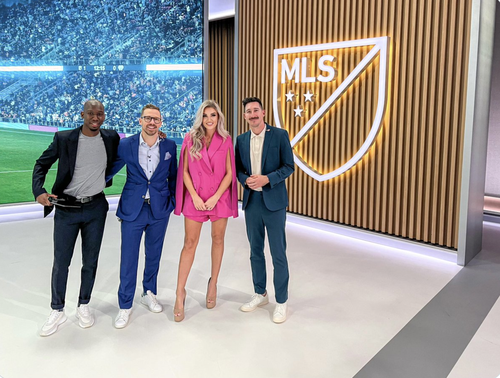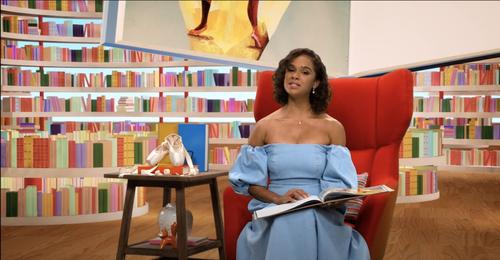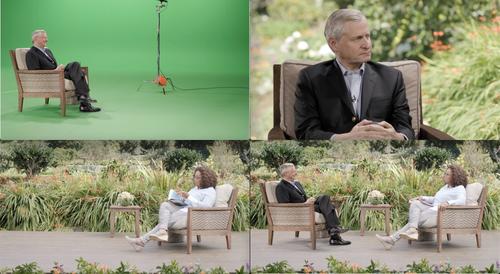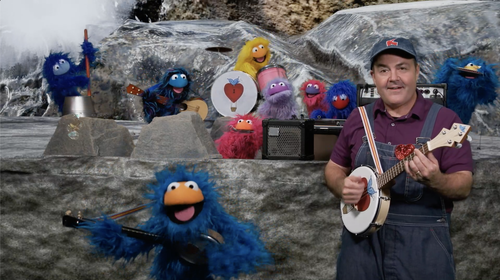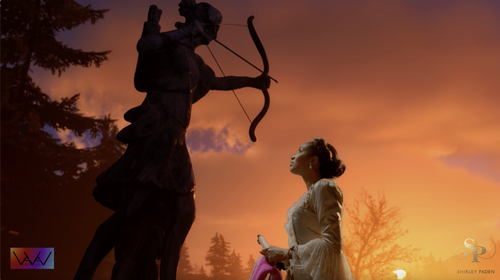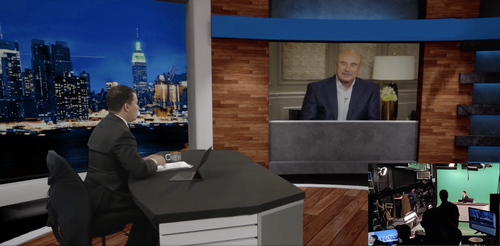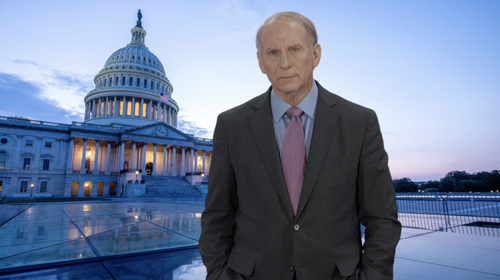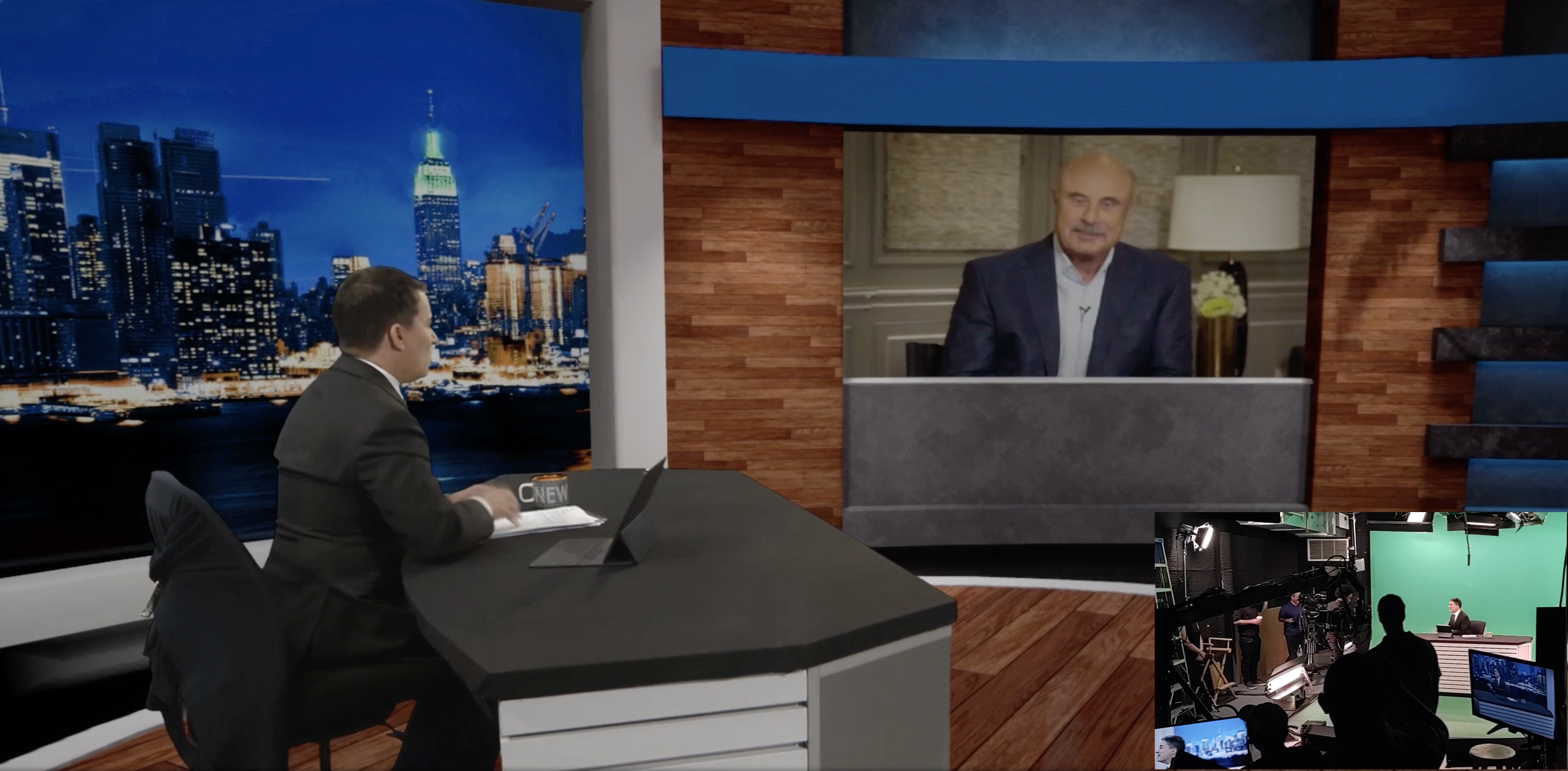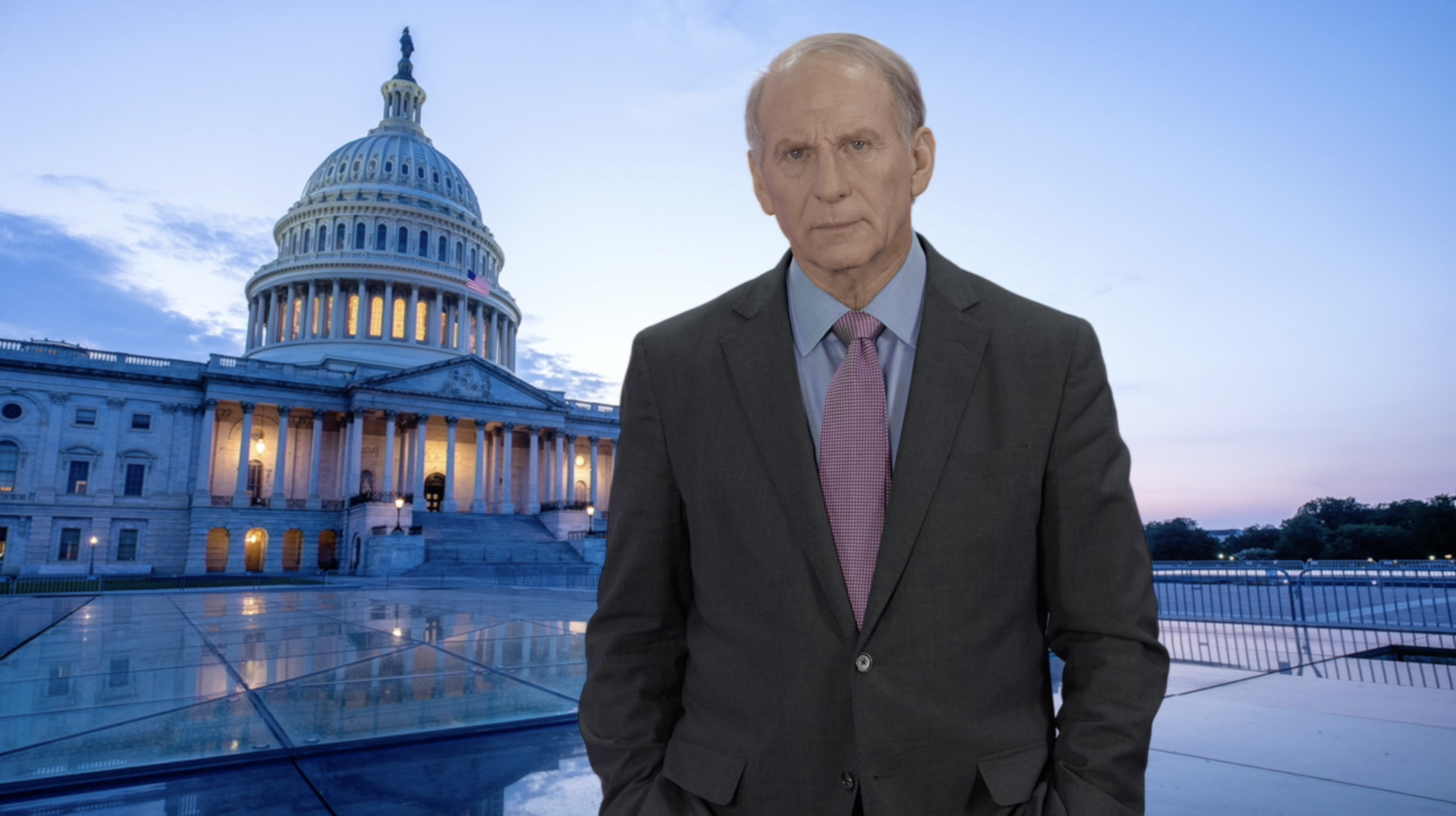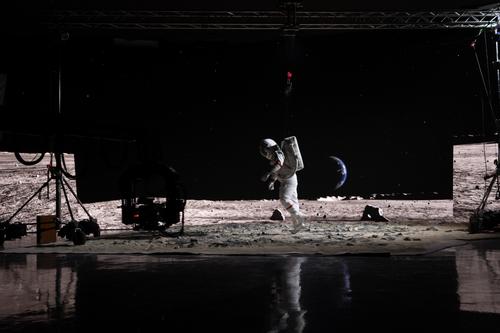Joe Jett: Going Mainstream
Joe Jett’s Virtual Production Journey from Pioneer to Leading Authority
Joe Jett has been at the forefront of the Virtual Production (VP) industry for over a decade. With a background in traditional broadcast technology, his expertise and pioneering spirit have been an essential factor in facilitating the adoption of VP by some of the biggest players in the US broadcast industry, and his journey stands as a testament to the fact that VP is far more common than you might suspect...
For a deep dive 360° view of where Virtual Production has come from, where it is, and where it’s going, we jet over to New York to talk with Joe at the Jettset Studio. So, how did he first encounter Virtual Production?
From Teacher to Pupil
“Throughout my career, I’ve worked as a freelance director, I’ve worked as a cameraman, and as a video engineer. I believe it was about 2010… I was consulting at CNBC, in Englewood Cliffs, New Jersey. I was training their teams to set up and read vector scopes and waveform monitors. I like the social side of teaching, taking the next generation through the process and showing them how to run things, based on my own experience.”
It was at CNBC that Joe would have his first chance encounter with VP.
“There was a financial television show hosted by Suze Orman. People would call in, and she would give financial advice. They were using a virtual set, and I saw an opportunity. The producers brought me onto that show as an engineer, and that was my first real dive into it, spending time with the technical director, learning how virtual sets work.”
As a freelancer, Joe’s work took him all over New York and New Jersey, and as it turned out, he was about to be at the forefront of a wave of early VP adoption.
Why go Virtual?
“Being a freelancer, I was also working at CBS, at their corporate headquarters in Manhattan on 57th Street, on a show for BET [Black Entertainment Television], as a video engineer when Inside Edition made the decision to go virtual.”
It was here, even during the early days, that Joe saw firsthand how the efficiency and cost-saving benefits would make VP a mainstream tool for broadcast television.
“The studio was shared between the CBS News Sunday Morning show and Inside Edition. Every Friday, they had to break down the large IE set and then rebuild it after the Sunday show, ready to shoot again on Monday. Inside Edition ran Monday through Friday, 50 or 52 weeks out of the year, and I think they were spending upwards of one, maybe even two million dollars on turnaround time with teamster costs.”
With such high rolling costs on the use of the same physical sets, it was inevitable that producers would look for a more efficient solution, as Joe explains.
“The producers recognised that with a virtual set, they could just move a curtain, push the cameras in, and voila! So, they made the decision to replace their hard set with the virtual one, using a green background, because it was a much more cost-effective solution.”
Small Worlds
Broadcast is a big industry made up of small worlds, but at the time, Virtual Production was even smaller. To achieve their goal, the producers would need skilled VP technicians to run the virtual set.
“The lead executive contacted his friend at CNBC to ask if they knew anybody with VP experience, because they’d never done it. The CNBC guy says, ‘Yeah! There’s this guy Joe Jett that we work with.’ At some point, CBS connects the dots and realises that ‘Hey! That guy we’re looking for – he’s in the building, just down the hall!’”
Serendipity aside, Joe found himself on a threshold, stepping out of the freelance world and into a technical revolution.
“The Inside Edition team approached me about taking a full-time position. I have a freelancer’s mentality, but when I thought about the new possibilities of this emerging technology, I was like, ‘Why not jump in on it? - Become some kind of expert in the field.’ So, I accepted the job and stayed with them for four years.”
Breaking Back Out
The pioneer spirit that had led Joe to jump back into a full-time position at CBS, becoming a Virtual Production expert, would lead him to break back out as a freelancer, pushing for wider Virtual Production adoption.
“Late 2015, I had a friend who owned a building with an empty green screen stage in Long Island City, right down the block from the Kaufman Astoria Studios, which is where they shoot Sesame Street. So, I decided to set up my own studio. I already had some gear that was given to me, and by April or May of 2016, I had bought into a VP system that I found at NAB Show. That’s also where I met Michael [Geissler, CEO and Founder of Mo-Sys] ...”
Pioneer Partnership
Joe’s experience as a pioneer of Virtual Production was almost literal, but he had the support of Mo-Sys to help him on this journey.
“In the early days, there were no manuals for Virtual Production. It was a bit like being on the frontier, combining all sorts of different technologies. I was one of the first StarTracker owners here in the States. This was 2016, so nine years ago or so. Michael actually came to my studio himself and assisted in installing the system.”
Of course, new technologies go through a development curve, and StarTracker was no exception, which is why Joe is so adamant about the benefits of having a direct relationship with the manufacturer.
"Everyone that I dealt with, from Michael to Martin [Parsley, Lead developer of the StarTracker line] and the other earliest team members that were developing the product, they were all extremely supportive. I can remember the early challenges, learning how to zero the StarTracker, because back then, there was just a lot to it, all combined into this one little box, but now Mo-Sys has the lens tweaker program, so StarTracker has gotten way easier.“
Joe’s relationship with Mo-Sys has been integral to both parties’ progression, and StarTracker has since developed streamlined user interfaces that Joe still relies upon to this day.
“There was a lot of R&D, with new versions and fixes, but the Mo-Sys team always found the time for me. I always got callbacks, and I always felt like I had their attention. I had excellent service and support back then, and I feel that way now, because it’s been roughly nine years and we’re still going strong.”
The Rise of Unreal
As an early adopter entering a whole new technological field, Joe remembers the challenges, as well as the triumphs.
“In 2016, most people weren’t really familiar with Virtual Production. They had either never seen it at all, or if they had, it was from what it looked like in the mid or late 90s - ‘not great’ looking sets, render engine issues, crashes and the inability to keep up.”
Any underwhelming early results of VP were, however, about to be swept aside.
“Back then, it was a challenging time to be involved in VP, and then suddenly everything changed. There was chatter amongst all these companies, with a level of concern, like ‘We have to jump on this bandwagon and get going, or we’ll be left behind!’”
An engine of change was emerging, delivered not from broadcast or film technology, but from the world of video games, as Joe explains.
“Unreal Engine came into the spotlight as this gaming engine that was years ahead of anything any of the other VP companies were offering. Epic Games had already poured billions of dollars into its research and development. It was clearly a much better product.”
Breathtaking
Joe recalls his first experience using the Unreal Engine and its impact on his entire approach to VP.
“I remember that moment where I just held my breath… I had a scan of a set that I had been working with for maybe six or nine months, but then I loaded it into Unreal… The quality of the shaders, of the lighting in the scene, it was all so much better, and I was like, ‘Wow! This truly is the future’”.
Eager to incorporate the enhanced visual fidelity of Unreal into his own VP workflow, Joe turned, of course, to Mo-Sys.
“Mo-Sys figured out pretty quickly that Epic was the way to go, so when I felt like I needed another system to work with Unreal, VP Pro was the obvious choice. I liked the idea that it was a plug-in.”
Adopting VP Pro to combine Unreal Engine and StarTracker technology into one Virtual Production workflow would be a process that took Joe’s expertise to an even higher level, no longer a pioneer, but an authority in the field, with skills and knowledge that were recognised by one of his neighbours…
From Pioneer User to Expert Installer
“The Sesame Street team at Kaufman Astoria Studios down the road also has corporate offices at the Lincoln Centre. It was during Covid, in 2022, they bought into Virtual Production and wanted to use Unreal Engine, so they bought into VP Pro.”
Joe’s neighbours weren’t just borrowing a cup of sugar. They invited him to be part of the entire VP Studio installation process.
“I brought in my guy, Jeff Burns, an engineer, to work with me, and we literally unboxed all of it together. We were on the phone with the Mo-Sys team on a daily basis, building the system together. It was a two-camera system, Canon lenses, and Canon cameras. Once we had everything up and running, Sesame Street needed someone to stay on and work with them because they didn’t have anyone trained in VP. Jeff stayed on and he continues to build it up. I have been there twice in the last two weeks, and it has really grown. It’s an incredible setup.”
How to Get to… Which Sesame Street?
Sesame Street now uses the VP studio as a permanent fixture in the production schedule, as Joe explains.
“The puppeteers will come in for a week’s shooting, all using VP Pro, and it works really well. They scanned the Sesame Street Village and imported it into VP Pro and they use it all the time.”
Of course, photo-realism is the goal for Virtual Production, working best when the results go... unnoticed, but as Joe continues, it starts to become clear that virtual sets can actually be better than real ones.
“We’ve all seen the characters sitting on the iconic Sesame Street stairway stoop, but I’ve worked on both sides. I’ve worked at the Virtual Production studio at the Lincoln Center, and I’ve also worked at the Kaufman Astoria Studios. I’m very familiar with that set, but the scan used at the Lincoln Centre studio is so good that even the people who work on the show wouldn’t know the difference between the two. In many ways, the virtual set looks better than the real one, because they’ve been able to go in and tweak, cleaning up cracks and paint chips. It’s clean but looks hyper-realistic, and you can still change things out, like a pot plant that might be sitting on the stairs or a windowsill.”
Joe reflects on the wider broadcast industry.
“When I think about production companies that do one-offs all the time, spending $100,000 on a set build, which will then be thrown in the garbage, or put into storage, which involves even bigger costs... Why would you ever do it? The technology is there now.”
Not An Issue
Joe discusses the evolution of the technology that has made all this possible.
“The stability of the engine has grown light-years. In the early days, you really had to manage everything, from the number of virtual lights you had to how large your assets were. You couldn’t go beyond something like 700,00 polygons, or you would exceed the capabilities of the engine to redraw them at the speed required for a moving camera. It would stall the system. A lot of that is now being forgotten, because it’s no longer an issue.”
Between enhancements to Unreal Engine and generational improvements in hardware performance, Joe’s work life has got easier.
“You might have had 100 trees moving in the breeze, but the frame rates would drop significantly. From shooting at 30fps (frames per second), it might drop down to five or six, because of the assets in the scene. Now, Unreal Engine has ‘Nanite’ technology, so polygon count? You can have billions of polygons within a scene.”
The latest buzzword in the gaming world is ‘raytracing’ - a virtual lighting technique that has been used in film and animation for decades, but is now possible in real-time with VP, continues Joe.
“You couldn’t really use raytracing in VP because the engines weren’t fast enough. Again, it’s practically a non-issue now, with incredible real-time calculations for light bouncing off objects. I recently updated to UE 5.6. and each new update really gets noticeably better - the shadows, the lighting and the reflections. There’s that old expression, ‘You don’t know what you don’t know.’ You compare versions and, for as good as it looked before, now it looks even better!”
Revelry for the technology aside, Joe brings us back to the purpose of VP - making high-quality content more efficiently.
“All of these advances are pushing us toward a complete one-to-one relationship between the virtual world and the real world, and what this all equates to is stability, higher resolutions and cinematic visuals. What used to require a post-production team of fifty in Hollywood can now be done in a studio such as mine in real-time, so that the client can walk out the door at the end of the day with a finished, high-quality product.”
Virtual Production is Mainstream
Clearly, others agree. Joe starts to discuss another of his major clients.
“I’ve been working with WWE for about eight years now, in Stamford, Connecticut. They have three virtual stages there, and I’ve been involved in their pre-game and post-game shows. They’re great to work with. They were bought by Endeavor, who also own UFC and now Major League Soccer.”
From ‘sports entertainment’ to major league sports, Virtual Production is being adopted at an increasing rate across broadcast.
“The decision was made that Major League Soccer should also use the virtual stages in Connecticut. They scanned the old physical set, and the London team was brought over. I was fortunate to be involved from the ground up, from the cameras and the engineering side of it, right down to the Ultimattes they use. Virtual Production is now mainstream, used at league level, going ten months of the year. They have two studios running simultaneously, because they do English and Spanish versions at the same time.”
The Fear Factor Is Gone
Joe reflects on what it means to have VP adopted so widely across broadcast.
“It’s no longer just a conversation with people hypothesising about where it is and where it’s going. It’s people now saying, ‘We’re working with it. It’s stable. It looks great.’ That fear factor is gone, and in New York, people don’t just know about it; they’ve had experiences with it. They want to learn fast so they don’t get left behind.”
For Joe, it’s not just about his journey, but about the progression of the technology and the community of engineers, technicians and artists that have helped it to grow.
“It’s gratifying for me to see any VP project succeed, because even if I’m not involved in it, the growth of Virtual Production helps everybody. It’s employing people and it’s saving shows that might otherwise be cancelled. I’m seeing this a lot on a local news level, with local news stations across the country adopting VP. We’re all familiar with the weather person pointing at that flat 2D wall, but now they can be in the mountains, above the clouds. Virtual Production gives you so many more possibilities, moving presenters to different parts of the studio throughout the evening, and it also allows you to share a stage with another entity.”
“I call it teleportation, where we can bring people from another facility, somewhere else, into our virtual stage. A great instance of that was Oprah Winfrey’s interviews during Covid. People look at my examples of that, and they’re still amazed that the two subjects weren’t in the same place.”
From live beam-ins of remote guests to delivering the weather forecast from the clouds, the sky’s the limit when it comes to Virtual Production, but just because the technology has gone mainstream, it doesn’t mean the evolution stops there.
Still evolving
“Seeing it all develop, looking back, it makes me think of the early days of television, or film, like Charlie Chaplin, exploring a new medium and trying new things. Creating the rules as we went, and now, it’s here, but it will all continue to grow and evolve.”
It turns out Joe’s entire career has oscillated between the roles of teacher and pupil, and although he is now a leading authority on VP, he is always ready to learn more.
“If you’re a good listener, you can learn more from the new adopters because a new adopter has a different perspective. I learn from young people all the time. A twenty-something can absolutely teach me something new, and I’m always excited by that. I know my way around VP Pro, but not as much as a designer or an operator working with it every day, because they are just constantly digging into it.”
Joe has moved on from the studio in Long Island City, with Jett Setts now operating out of a new facility at ‘All Mobile Video’ on 26th Street in Manhattan. He may have been instrumental in helping Virtual Production go mainstream, but that doesn’t mean he’s not still learning, still innovating, and we can’t wait to see where his pioneering spirit jets him off to next!

